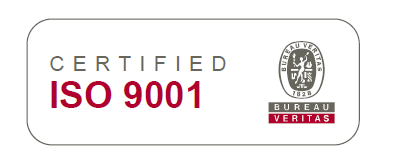These are some of the questions that we often get asked about NVG lighting. We hope this will help to resolve any confusion that may exist.
- Isn’t the fact that I can dim my lighting right down sufficient to make it NVG compatible?
- I’m using LEDs. Aren’t these NVG compatible anyway?
- Does Green A and Green B lighting mean they are compatible with Class A and Class B NVGs? What about Yellow A and Yellow B?
- My hand-held display has a touch screen. How can you filter that without affecting the sensitivity?
- Your interference filters have much higher transmission than your absorption filters. Why don’t you always use interference filters?
- Why is my NVIS Red really an orange colour? And why can’t I have a red light that’s Class A compatible?
- I’m using covert IR LEDs. How do I make those NVG compatible?
- What specifications should my NVG lighting meet?
- Can I tell if my light source is NVG compatible by looking at it with NVGs?
- So how can I tell if my whole cockpit installation is compatible?
- How does the pilot manage to read the instruments and look outside the cockpit without refocusing the goggles?
- Instead of illuminating each instrument can we just add some low level lighting situated behind the pilot?
1. Isn’t the fact that I can dim my lighting right down sufficient to make it NVG compatible?
Not on its own, no. It’s the spectral content of the light that matters. When you dim it enough to have no impact on the NVGs you still need to be able to see it with the human eye. Because the NVGs and the human eye respond over different wavebands (albeit slightly overlapping bands), you need to reduce the wavelengths that interfere with the NVGs, but not reduce the wavelengths that the human eye sees to the same extent. Standards such as MIL-STD-3009 are all about achieving that balance between keeping lights visible to the unaided eye while eliminating output in the NVG response band.
Consolite supplies a wide range of filters, for all types of light source, so as to achieve the optimum balance between visible transmission and near-IR blocking, but there is no such thing as a universal, “one size fits all” filter.
2. I’m using LEDs. Aren’t these NVG compatible anyway?
Sometimes! Some green and blue LEDs have the right wavelengths to be fully NVG compatible in the sense defined in MIL-STD-3009. However, they are almost always not quite the right colour to meet the chromaticity requirements for cockpit lighting in the same standard. Then you need to add a filter to change the colour slightly, which can reduce the output considerably. Sometimes it is better to start with a white LED and filter that. In other situations chromaticity may not be so critical in which case an unfiltered LED can be used. Still it is important to use LEDs of the right spectral content. For example some have a longer “tail” into the longer wavelengths than others, and these can be problematic. Others may appear green, but are actually a green-yellow colour and not at all NVG compatible without filtering.
Consolite can supply suitable filters for all types of LED.
3. Does Green A and Green B lighting mean they are compatible with Class A and Class B NVGs? What about Yellow A and Yellow B?
No, NVIS Green A and NVIS Green B are distinct colours defined in MIL-STD-3009 and nothing to do with Class A or Class B. As a general rule Green A is used for panel backlighting or floodlighting, while Green B is for illuminated switches and indicators. Unfortunately this does cause some confusion as MIL-STD-3009 also refers to Class A and B NVGs, but these relate to different cut-off wavelengths for the objective filter (known as a minus blue filter) on the NVGs and so define the response band of the NVGs. Usually both Green A and Green B lighting is required to be compatible with Class A NVGs (which means it will almost always be Class B compatible too). Things get even more confusing as there is only one Yellow colour defined, NVIS Yellow, but for it to be compatible with either Class A or Class B NVGs requires different spectral characteristics, and so the filters are sometimes referred to as Yellow A or Yellow B.
Consolite can supply filters that are fully compliant with all aspects of MIL-STD-3009 and other standards.
4. My hand-held display has a touch screen. How can you filter that without affecting the sensitivity?
Ideally we would filter LCDs internally with a filter directly over the light source. The touch screen function is then completely unaffected. Of course this is not always possible and sometimes we need to add a filter to the front of the display. We do have thin flexible filters that work well on this type of display and have minimal impact on the screen sensitivity.
Consolite has wide experience of filtering displays in both ways.
5. Your interference filters have much higher transmission than your absorption filters. Why don’t you always use interference filters?
On paper they do look much better, and in many cases they are. However, interference filters do have some disadvantages. They are inherently reflective so they don’t work well on the front of displays or indicators where daylight readability is required. They suffer from colour shifts when the light passes through at an angle, which can sometimes cause problems. Also the IR blocking is not as effective at higher angles. The coatings cannot easily be applied to curved surfaces, so only flat filters can be produced. On the plus side they do generally have much higher transmission than absorption filters, and thermally resistant substrates can be used, which makes them well suited to high temperature light sources such as incandescent floodlights. The sharp wavelength cut-off that can be achieved also means that colour retention is generally better than absorption filters, so white light stays white and red light stays red (more or less, see 6 below).
Consolite stocks a wide range of both interference and absorption filters for all types of light source and application.
6. Why is my NVIS Red really an orange colour? And why can’t I have a red light that’s Class A compatible?
The answers are related. Red is the colour that is nearest to the NVG response band and so has the potential to cause the most interference with NVGs. In fact a red light would overlap so much with the Class A response that it is simply impossible to make it Class A NVG compatible. Class B compatibility is possible, but a sharp cut-off in the emissions is required (see 5 above) to avoid the Class B response band without removing too much of the red wavelengths from the light. Even so, in practice a certain amount of red does end up getting removed and so the light looks an orangy-red rather than a pure red. This is allowed for in the MIL-STD-3009 chromaticity definition.
Consolite stocks a variety of NVIS Red filters for both incandescent and LED light sources.
7. I’m using covert IR LEDs. How do I make those NVG compatible?
Strictly speaking NVG compatibility means lighting that is visible to the unaided eye, but does not interfere with NVGs (see 1 above). So it really doesn’t make sense to talk about NVG compatible covert LEDs. These are usually intended to be invisible to the naked eye, and only visible through NVGs. However, there might be some unusual cases where IR LEDs are used for another function, such as communication, but where interference with NVG operation can occur. In that case a suitable choice of IR wavelength and possibly some additional filtering is necessary.
Consolite can provide filters to turn visible into covert lighting, or to help reduce the impact of covert wavelengths on NVGs.
8. What specifications should my NVG lighting meet?
The commonest standard we are called on to meet is the US MIL-STD-3009, which covers the requirements for military cockpit lighting, as well as some aspects of exterior lighting. Its predecessor was MIL-L-85762A and that is still called up from time to time. There are also some SAE standards that specifically relate to various aspects of exterior lighting. For civil helicopters RTCA/DO-275 is commonly requested. For warship lighting STANAG1445 is the historical standard, but in the UK and increasingly elsewhere has been superseded by DEF STAN 02-587 Part 3.
Consolite can advise on suitable standards where there is any doubt.
9. Can I tell if my light source is NVG compatible by looking at it with NVGs?
In short, no. Firstly NVG compatible lighting only works with aviators’ goggles, as they have the long pass minus blue filter (referred to in 3 above). Looking through standard infantry goggles will not tell you anything. Secondly, even using aviators’ goggles alone is not a very useful indication of compatibility or otherwise. The reason is that the NVGs use an auto-gain function, which means that when you look at a bright source through them they will reduce their sensitivity and the source will not look overly bright. This may seem fine until you try to look outside the cockpit and find that you cannot see anything of the external scene. Compatible sources need to be certified as such by measuring with a suitable instrument called a spectroradiometer.
Consolite certifies all its products in this way, and we can measure your light sources if you need to quantify the degree of compatibility.
10. So how can I tell if my whole cockpit installation is compatible?
RTCA/DO-275 defines a test to check this. It involves placing the cockpit in a dark environment and observing a resolution chart with NVGs through the cockpit windscreen. Switching the cockpit lights on and off should make no difference to the ability to resolve the details on the chart.
Consolite can assist with setting up this test if required.
11. How does the pilot manage to read the instruments and look outside the cockpit without refocusing the goggles?
The pilot doesn’t read the instruments through the goggles. Aviators’ NVGs are mounted on the helmet with eye relief, which means that the pilot can view the instruments with the naked eye by glancing down under the goggles. They are focused on infinity to view the external scene. This is why it is important for the instruments to have adequate visible illumination (see 1 above), and for the night time illumination level to be similar to the brightness seen in the NVG eyepiece.
12. Instead of illuminating each instrument can we just add some low level lighting situated behind the pilot?
This may cause problems with reflections off the cockpit transparencies. It is generally better to keep any external instrument lights as close to the instruments as possible, although map reading and utility lights above and behind the pilot do have a role to play if properly controlled.

